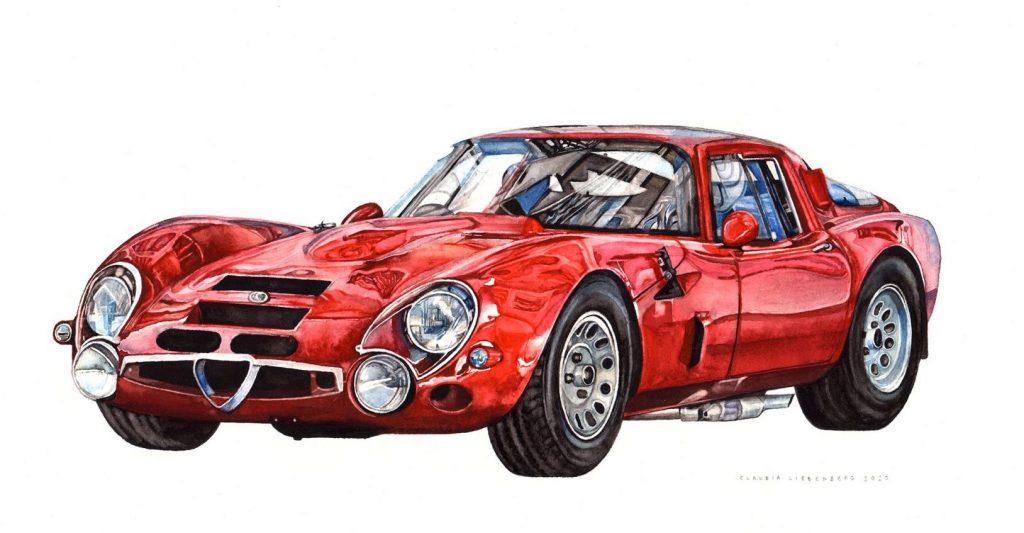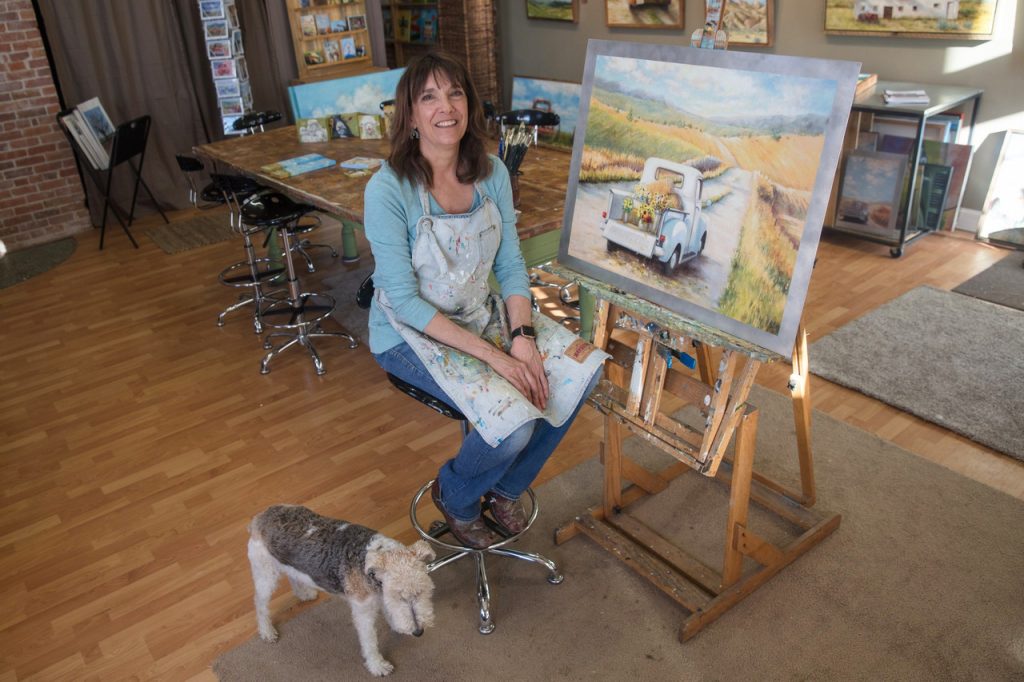
Women show their passion for automobiles in a myriad of ways. Some become gearheads. Others go into racing. Many enter the auto industry as engineers, designers, or line workers. They work at auto dealerships and auto factories. Women collect cars, join automotive organizations, and become automotive historians. They are employed as automotive journalists, editors, reviewers, and photographers. And some demonstrate auto appreciation by simply getting behind the wheel.
As reported in a recent Petrolicious article, Claudia Liebenberg is a South African artist who displays her enthusiasm for cars through painting. Although her first love is motorcycles, she developed an interest in automobiles through her father who spent some time as a race car driver in his youth. As she notes, “he always had some sort of classic car parked at home and always took us out for rides.” Her favorites are classic European sports cars; the detailed grills and sleek curves present an artistic challenge she gladly takes on. Liebenberg’s medium of choice is watercolor, which can be difficult and unforgiving. As Liebenberg remarks, “it’s got a mind of its own. […] You have to try and capture and guide it into the shape you have in mind, to the color gradient you have in mind.”
Liebenberg’s works are minutely detailed; they capture every nut and bolt, each shadow and reflection. Her love for the subject matter is evident in every stroke. Liebenberg shares her creative process on Instagram; folks can follow the evolution of a vehicle step by step. Liebenberg’s Instagram account functions as her own assembly line as she invites people to be part of the process. Her work has garnered notice; she recently embarked on an evolving career painting commissioned pieces for brands such as BMW. Liebenberg’s dedicated passion for machines and her own honed artistic ability has produced exquisite paintings admired by both the creative set and dedicated auto aficionados.
It is a longstanding assumption that women do not have the same appreciation for the automobile as their male counterparts. However, it is not that women are indifferent to cars, but rather, they express their passion in different ways. As the article focused on Claudia Liebenberg argues, art – whether painting, drawing, photography, or sculpture – can provide women with the means to illustrate – literally and figuratively – a love of automobiles.
Anderson, Arabella. “Be Honest: The Water-Color Paintings of Claudia Liebenberg.” Petrolicious.com 26 June 2020.
